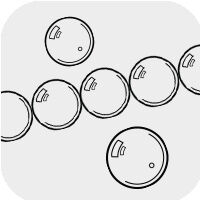Fossil Coral
Meaning and Properties
Fossil Coral History
Fossil coral is a natural gemstone that is created when prehistoric coral is gradually replaced with agate. Corals are marine animals and it is their skeletons that are fossilized and preserved. The fossil coral forms through hardened deposits left by silica-rich waters. The entire process can take over 20 million years.
The proper name for fossil coral is "agatized coral" or "agatized fossil coral." Agate, with its silicon dioxide composition (SiO2), is a variety of naturally occurring chalcedony--or microcrystalline quartz--rather than a type of coral. For this reason, fossil coral should not be mistaken for endangered or protected reef coral or precious coral. Fossil coral is also much harder than precious coral. Most agatized fossil coral exhibits a dull to waxy luster and interesting skeletal-like ancient coral patterns, most often appearing in flower shapes.
Fossil coral deposits are often used for the making of health and drug supplements because of their high calcium, potassium, magnesium and sodium content. Because fossil coral can remove chemical impurities such as chlorine and formaldehyde it is used in industrial fertilizers and water purification filters.
Fossil Coral Metaphysical Properties
According to metaphysical beliefs, fossil coral is a grounding stone good for bringing about change. Agate is thought to be able to help heal pancreatic disorders and improve blood and air circulation. Fossil coral is used for healing eye, skin and stomach illnesses. It is even believed to enhance longevity.
Although coral is not a traditional birthstone for any month, it is a non-traditional zodiac stone for Taurus.
Fossil Coral Geological Properties
Fossil coral is created through the process of calcium carbonate (coral) being replaced by silica. The silica ranges from light amorphous opaline to dense forms of chalcedony. Depending on the exact mineral concentration, fossil coral specimens can have slightly varying densities. Although the pattern and body color of fossil coral is quite distinct, it can be mistaken for other types of agate such as moss or dendritic agate.
Most fossil coral is found in Indonesia and the USA (in Florida and Georgia). Fossil coral from Indonesia is thought to be the most unique and desirable. The Florida state legislature designated agatized fossil coral as its state stone in 1979.
|
|
|
|
|
|
|
|
|
|
|
|
|
|
|
|
|
|
Proper Care of Fossil Coral
Because fossil coral is a form of quartz (agate), it is quite durable compared to most other gemstones. Clean fossil coral using warm, soapy water and a soft cloth, then rinse well to remove any soapy residue. Despite its hardness and durability, fossil quartz can still be easily scratched by other materials. Avoid wearing, mixing or storing fossil quartz with other gems, whether softer or harder, to prevent scratches and fractures.
Always remove gems and jewelry before exercising or any vigorous activity. Like most gemstones, avoid the use of any harsh household chemicals (bleach, sulfuric acid and suchlike) when caring for or cleaning your fossil coral. Most forms of agate are quite porous, allowing them to be easily stained, meaning that they can absorb other chemicals and colors quite easily. Avoid prolonged exposure to extreme heat, as heat can permanently alter the color of your gemstone. When storing fossil coral, wrap it using a soft cloth and place it inside a fabric-lined box for added protection.
Designing with Fossil Coral
The patterns of prehistoric coral in grey and multi colors with exquisite lace-like, naturally formed designs make fossil coral well-equipped to handle to spotlight by itself or teamed with sympathetic colors such as sand opal. The patterns of fossil coral also team up nicely with other patterns such as Crazy Horse and ocean jasper. Fossil coral has also been seen to work well as neutral colors spacer beads alongside colors such amethyst and lilac, or any colors for that matter.
View more resources featuring fossil coral, including Design Ideas, Videos, Tutorials and more!
Shop for Fossil Coral
**Please note that all metaphysical or healing properties listed are collected from various sources. This information is offered as a service and not meant to treat medical conditions. Fire Mountain Gems and Beads® does not guarantee the validity of any of these statements.
How did you like this resource? Your feedback helps us provide resources that matter to you most.
Copyright Permissions
All works of authorship (articles, videos, tutorials and other creative works) are from the Fire Mountain Gems and Beads® Collection, and permission to copy is granted for non-commercial educational purposes only. All other reproduction requires written permission. For more information, please email copyrightpermission@firemtn.com.

